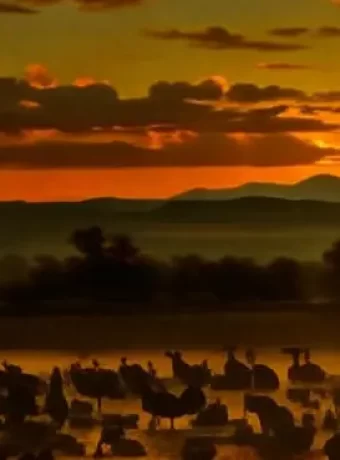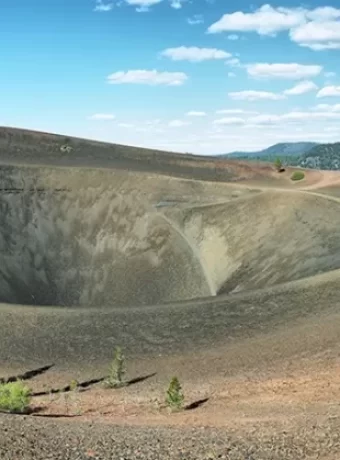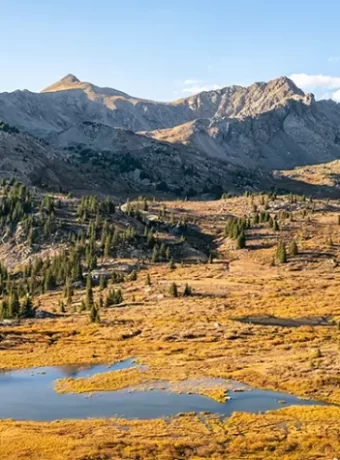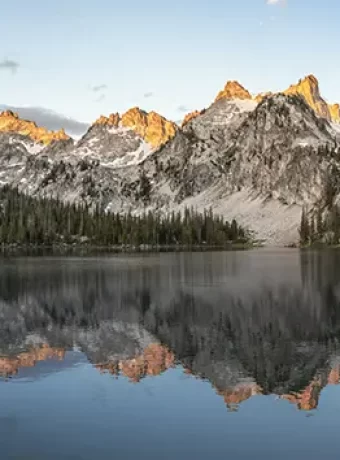15 Best Hikes in Rocky Mountain National Park
Ever dreamed of lacing up your boots and hitting the trails in one of America’s most iconic national parks? Let me tell you, nothing compares to the feeling of stepping into nature’s embrace as you embark on a journey through 15 Best Hikes in Rocky Mountain National Park.
A gusty breeze swirling around alpine peaks, echoing bird calls piercing through silent forests, streams chattering over time-worn rocks. The landscape here isn’t just diverse; it’s downright mesmerizing. You could spend a lifetime hiking and backpacking Rocky Mountain National Park.
I’ve spent countless hours wandering these trails myself – each offering its unique charm. From an easy stroll around Bear Lake that anyone can tackle to a heart-pounding trek up Longs Peak reserved for seasoned hikers only.
Deciding which path to embark on can be a challenge. But don’t worry, with so many breathtaking panoramic views and unforgettable experiences waiting for you, you’re sure to create memories that will last a lifetime.
Table Of Contents:
- Overview of Rocky Mountain National Park
- Best Hikes in Rocky Mountain National Park
- Planning Your Hike in Rocky Mountain National Park
- Importance of Leave No Trace Principles
- Safety Tips for Hiking in Rocky Mountain National Park
- Hiking Experiences & Personal Recommendations
- FAQs in Relation to 15 Best Hikes in Rocky Mountain National Park
- In Conclusion of Kicking up Trail Dust on the 15 Best Hikes in Rocky Mountain National Park
- Other Rocky Mountain National Park Hikes and Colorado Destinations
Overview of Rocky Mountain National Park
If you’re in search of an adventure that includes high glacial snow fields, rounded cirques, jagged mountain peaks, placid lakes and stunning montane forests – then look no further. Rocky Mountain National Park, a true gem in Colorado’s Front Range has it all.
This national park is not just about the breathtaking views; it’s also home to diverse ecosystems ranging from lush meadows at lower elevations to alpine tundra found atop its highest peaks. In addition to this natural splendor, there are nearly 360 miles of hiking trails for those seeking outdoor adventures.
The park spans over 400 square miles providing ample space for wildlife including elk herds and bighorn sheep which can often be spotted by visitors throughout the year. The captivating sightseeing experiences make Rocky Mountain National Park a must-visit destination when touring the Estes Park area.
Wildlife & Biodiversity of Rocky Mountain National Park
A visit here lets you witness nature’s raw beauty as well as some incredible biodiversity right before your eyes. From spotting elusive moose hiding amongst dense willow thickets near water bodies or seeing marmots scampering across rocky outcrops above tree line – every encounter is sure to leave an indelible mark on your heart.
Bird watchers won’t be disappointed either with more than 280 bird species recorded within the park boundaries making it a haven for our feathered friends like white-tailed ptarmigans and rosy finches who call these mountains their home.
Hiking Opportunities Galore.
The vastness of this park allows for plenty of opportunities to get lost amidst nature’s bounty whether you’re an experienced hiker or a casual stroller. With trails ranging from easy walks around serene lakes to challenging hikes that test your mettle, the park caters to everyone’s taste for adventure.
Popular destinations like Bear Lake and Alberta Falls are perfect for families with kids while those seeking solitude can explore less-traveled paths leading towards Sky Pond or Chasm Lake – each trail revealing its own unique allure.
Best Hikes in Rocky Mountain National Park
Dive into the top 15 hikes in Rocky Mountain National Park. Whether you’re looking for an easy stroll around Bear Lake or a challenging trek up Longs Peak, there’s a trail waiting just for you.
Bear Lake – A Popular Choice
Nestled at the end of Bear Lake Road is one of the most beloved hiking spots. Given its ease of access and breathtaking vistas, Bear Lake is a popular destination for park-goers. This scenic hike offers not only serenity but also an introduction to Rocky Mountain’s splendor with stunning sights along every turn.
The entire hike clocks in at just 0.6 miles round-trip making it suitable even for beginners. Plus, if you get there early enough, parking availability right by the trailhead located near Bear lake area makes this spot convenient too.

Alberta Falls – An Easy Trek
If waterfalls are your thing then Alberta Falls will be worth every step. The falls cascade beautifully down rocks creating picturesque scenes which hikers travel far and wide to see. Starting from Glacier Gorge. Trailhead located near bear lake road this easy trek measures approximately 1.7 miles round trip through some delightful woodland scenery before revealing Alberta Falls itself – a true jewel within Rocky Mountain National Park.
Alberta Falls, Glacier Gorge. Rocky Mountain National Parks
Check out the whole trail to Mills Lake and back out to the trail head: Hike to Mills Lake, Rocky Mountain National Park
Longs Peak – A Challenging 14er Climb in Rocky Mountain National Park
Rising above all other mountain peaks in sight stands Longs Peak —the tallest mountain and ultimate test for seasoned hikers visiting rocky mountain national park hiking trails. The journey begins at long peak trailhead where climbers start their grueling. Yet rewarding climb across steep terrain surrounded by natural beauty.
Longs Peak is the only ‘fourteener’ in our list and for good reason. It’s not just a hike; it’s an adventure of a lifetime, offering epic views but be warned — this one is extremely difficult with a distance of 15 miles round-trip. Only take on Longs Peak if you’re prepared for an intense challenge.
Proper apparel is extremely important on outdoor excursions. Longs Peak is a tough hike that ought to be started at 3 am. You will hike through several temperature changes throughout the day. Click here for the best in outer wear.

Trail Highlights & Hidden Gems in Rocky Mountain National Park
For a truly unique outdoor adventure, uncover the secrets of Rocky Mountain National Park by exploring its off-the-beaten path trails. These hidden gems offer unique features like alpine lakes, cascading waterfalls, and panoramic views of high mountain peaks.
Sky Pond – A Rewarding Journey
The journey to Sky Pond is an unforgettable adventure with numerous attractions along its 9.5-mile trail. Starting from Glacier Gorge Trailhead, this strenuous hike isn’t for the faint-hearted but rewards you generously at every turn.
Your trek starts by following Glacier Gorge Trail towards Alberta Falls, where roaring waters crash down rocky cliffs creating quite a spectacle. But this is just an appetizer. Continue your ascent past Mills Lake and Jewel Lake until reaching The Loch – all worthy stops on their own.
The final stretch takes hikers through Timberline Falls (prepare to get wet.) before revealing Sky Pond nestled between Taylor Peak and Powell Peak – a breathtaking scene worth every sweat-drenched step.



Fern Lake – A Scenic Delight
An underrated gem among Rocky Mountain’s trails; Fern Lake offers serene woodland scenes coupled with majestic mountain vistas during its moderately challenging 7.6 miles round-trip hike.
Hiking up from Moraine Park area via Fern Creek gives way to diverse flora/fauna as well as chances for wildlife spotting such as elk or deer if lucky enough. After passing Arch Rocks and The Pool landmarks along Big Thompson River which add variety to the scenery throughout your trek. Fern Lake is one of my favorite destinations for a weekend or just the day.
Bridge over creek leaving Fern Lake and heading to the Big Thomson River.
Hallett Peak via Flattop Mountain – High Mountain Views
Beginning at Bear Lake, the round-trip trek to Hallett Peak is a 10.2 mile journey that will certainly take your breath away for experienced hikers.
The journey kicks off on the Flattop Mountain Trail. It snakes through lush pine forests, then bursts into open space above the tree line. From there, you get sweeping views of Tyndall Glacier and Dream Lake down below.
Uncover the magic of Rocky Mountain National Park’s lesser-known trails. Embark on the challenging yet rewarding Sky Pond trail, or soak in serene woodland scenes at Fern Lake. For a real thrill, tackle Hallett Peak via Flattop Mountain for stunning high mountain views. These hidden gems promise adventure and breathtaking beauty at every turn.
Planning Your Hike in Rocky Mountain National Park
The thrill of adventure beckons you to the vast expanses of the Rocky Mountain National Park. But before lacing up your boots, let’s dive into some practical planning tips for an unforgettable hiking experience.
Picking Your Trail
Your choice of trail can make or break your hike. Are you seeking a tranquil stroll around Bear Lake? Or perhaps aiming higher with challenging hikes like Longs Peak? Remember that each trail comes with its unique flavor and challenges. A bit more effort spent here on deciding which mountain trail suits you best will reward handsomely during your visit.
In Rocky Mountain National Park, distances vary from 0.6 miles round-trip at Bear Lake to 15 miles at Longs Peak. The park service provides comprehensive information about all trails – use it wisely.
Parking Availability in Rocky Mountain National Park
With over four million visitors annually, finding a parking spot near popular trails like Alberta Falls can be tricky especially during peak seasons. Some key areas such as Glacier Gorge Trailhead and Bear Lake Road often fill up by early morning.
To beat this challenge, try starting early or consider using the free shuttle bus service operating in summer months that covers major sites including Glacier Gorge Trailhead and Bear Lake Area.
Check Weather & Trail Conditions
Rugged peaks topping out above tree line mean weather conditions can change rapidly within hours – sunny skies may turn stormy without much warning. Always check forecasts beforehand but also stay alert while on the move.
- Bear in mind altitude changes significantly affect temperature so pack layers accordingly even if it’s a hot summer day at the base.
- Trails may also be icy or snow-covered well into spring so make sure you have appropriate footwear.
You can find up-to-date trail conditions on the National Park Service website, making it your best friend for this part of planning.
Understanding Rules & Regulations
The park is home to an incredible diversity of flora and fauna – but remember, we’re only visitors in their territory. The principles of Leave No Trace should guide every step you take within Rocky Mountain National Park.
Deer Mountain. Following these guidelines not only keeps our environment clean, but also lets future generations enjoy the untouched beauty of places like this.
Importance of Leave No Trace Principles
We’ve all heard the saying, “Take only pictures, leave only footprints.” This adage is at the heart of Leave No Trace principles, a set of guidelines aimed at preserving nature and minimizing human impact. It’s crucial to practice these when hiking in Rocky Mountain National Park.
Awareness Matters: Understanding Impact on Nature
When we hike trails like Bear Lake or Alberta Falls, we might not think about our footprint beyond literal footprints. But every step matters. Our actions can disrupt wildlife habitats or lead to soil erosion. Even small things like littering wrappers from trail snacks can have long-lasting effects.
The park hosts diverse ecosystems and stunning landscapes; its pristine alpine lakes such as Emerald Lake and Sky Pond deserve our utmost respect. By following Leave No Trace principles, we help ensure that these beautiful places remain unspoiled for future generations.
Adopting The Seven Principles
The core of Leave No Trace lies in seven principles designed to promote responsible outdoor ethics:
- Plan Ahead and Prepare: Before hitting the Deer Mountain Trail or setting off towards Chasm Lake, make sure you know what awaits you. Check weather forecasts and pack necessary gear – it’s your first step towards a respectful adventure.
- Travel & Camp on Durable Surfaces: Pick established paths over creating new ones while exploring Dream Lake or Nymph lake areas.
- Pack It In – Pack It Out: If you bring it into the park (yes even that granola bar wrapper), make sure it leaves with you.
- Leave What You Find: Tempted to pocket a pretty rock from Black Lake? Don’t. Leave everything as you found it.
- Minimize Campfire Impact: If fires are permitted, use established fire rings and keep them small.
- Respect Wildlife: The park is home to a diverse range of wildlife. Remember, this is their natural habitat and we’re just visitors. So, always observe from a distance and never disturb or feed the animals.
RMNP Hiking Tips:
Respecting nature is key when exploring Rocky Mountain National Park. Embrace the ‘Leave No Trace’ principles: plan your adventure, stick to durable surfaces, take out what you bring in, don’t pocket natural souvenirs or disrupt wildlife habitats. Your mindful steps today will help preserve this breathtaking park for future generations.
Safety Tips for Hiking in Rocky Mountain National Park
Hiking through the diverse landscapes of Rocky Mountain National Park is an unforgettable experience. But, with any adventure comes responsibility. It is essential to be ready and comprehend the potential difficulties you may confront on your expedition.
Beware of Changing Weather Conditions
The weather in Rocky Mountain National Park can change rapidly due to its high elevation. One minute it could be sunny, and the next you’re caught in a hailstorm. So, always check the forecast before setting off on your hike.
Pack layers that can handle both warm temperatures at lower elevations and freezing conditions up high. This will ensure comfort throughout your trip regardless of fluctuations in temperature or unexpected showers.
Be Prepared for Elevation Gain
Elevation gain isn’t just about how hard you’ll have to work climbing uphill—it also affects how much oxygen is available as you ascend higher into thinner air.
To combat altitude sickness while hiking trails like those leading up Longs Peak or Sky Pond—two hikes notorious for their significant gains—you should acclimatize properly by spending a few days at higher altitudes before attempting these challenging climbs.
Tread Carefully On Gravel Trails
Avoid slipping on loose gravel by wearing appropriate footwear with good grip—no flip flops here. Some paths may appear harmless but turn tricky when descending steep sections covered with small rocks. Also watch out for roots jutting out from beneath trees—they make excellent tripping hazards.
Navigate Wildlife Encounters Wisely
- If faced with larger wildlife such as moose or elk, give them plenty of space and never approach.
- If you spot a bear while on your Bear Lake hike, speak calmly yet firmly to let it know you’re human—not prey.
Remember: feeding wildlife is not only illegal in the park but also harmful to their health and changes natural behaviors.
Be Prepared and Respectful: Embrace the unpredictable weather in Rocky Mountain National Park by packing for all conditions. Tackle elevation gains wisely, taking time to acclimatize. Opt for sturdy footwear on gravel trails, avoid tripping hazards like roots, and navigate wildlife encounters calmly—never feed them.
Hiking Experiences & Personal Recommendations
Rocky Mountain National Park presents a range of hiking options, each with its own distinctive character. From the challenge of Longs Peak to the tranquility of Mills Lake, there’s something for everyone. Allow me to explain why certain trails stand out as my personal favorites.
Twin Sisters – Panoramic Views
If you’re looking for breathtaking panoramic views that make every step worth it, Twin Sisters is your trail. This hike spans 7.4 miles round-trip with a moderate difficulty level but trust me when I say that reaching the top feels like touching heaven.
You start from a well-marked trailhead located near Estes Park and climb steadily through lush forest before emerging above tree line into alpine terrain where rocky mountain peaks stretch as far as your eyes can see.
The real prize awaits at the summit: an unrivaled view of Longs Peak – Rocky Mountain National Park’s tallest mountain – and down below, beautiful Estes Park sprawling lazily amidst greenery.
Mills Lake & Black Lake – Picturesque Lakes
Sometimes we hike not for adrenaline or workout but to find peace; if this resonates with you then consider heading towards Mills Lake and further on to Black lake. It’s like stepping into one stunning painting after another as you move deeper into this less-trodden path within our beloved national park. If time doesn’t permit hiking to Black Lake, Mills Lake is a great picturesque picnic location.
This journey covers about 10 miles total (to reach both lakes) making it somewhat challenging yet undeniably rewarding especially once you get your first glimpse at these glacially formed bodies shimmering under the sun.
And let me tell you, sitting by Black Lake – a serene alpine lake surrounded by towering cliffs and cascading waterfalls – can be one of those moments when time seems to stop, letting nature’s grandeur truly sink in.
A Final Note on Hiking Rocky Mountain National Park
Every trail within this area, in my opinion, holds its own unique charm and allure. Each one tells a different story of nature’s majesty and offers an opportunity to explore something new.
Rocky Mountain National Park teems with a variety of hikes, from challenging peaks like Longs Peak to tranquil lakeside trails such as Mills Lake and Black Lake. The Twin Sisters trail gifts hikers with panoramic views that make every step worth it. Remember, each path holds its own unique charm and offers an opportunity for new exploration.
FAQs in Relation to 15 Best Hikes in Rocky Mountain National Park
What is the most popular hike in Rocky Mountain National Park?
The Bear Lake trail takes top honors as the park’s most frequented path due to its short distance and breathtaking views.
Where is the prettiest place on the Rocky Mountains?
Dream Lake, with its stunning alpine backdrop and clear waters, often steals visitors’ hearts in Rocky Mountain National Park.
Is Sky Pond or Chasm Lake harder?
Sky Pond edges out slightly tougher. Both hikes have steep climbs but Sky Pond involves scrambling up a waterfall which ups its difficulty level.
Is Rocky Mountain hard to hike?
The challenge varies greatly depending on your chosen trail. From gentle strolls like Bear Lake to strenuous treks like Longs Peak, there’s something for every skill level.
In Conclusion of Kicking up Trail Dust on the 15 Best Hikes in Rocky Mountain National Park
That’s it! You’ve just journeyed through the 15 Best Hikes in Rocky Mountain National Park.
We touched on popular trails like Bear Lake and Alberta Falls, tackled challenging peaks like Longs Peak, and discovered hidden gems such as Sky Pond.
Remember to plan your hikes wisely. Check trail conditions, understand parking availability at trailheads. Also consider lesser-known trails for a unique experience with spectacular views and features.
Bear in mind the importance of Leave No Trace principles while hiking – this is our shared responsibility. Keep safety tips front-of-mind: be aware of changing weather conditions and prepare adequately for hikes with significant elevation gain.
In essence, every hike here offers an adventure waiting to happen; panoramic views that make you catch your breath; tranquil lakes that mirror cloud-streaked skies. Each path leads not only towards nature’s marvel but also into discovering yourself anew!
Hike safely and responsibly out there!
Other Rocky Mountain National Park Hikes and Colorado Destinations
On the west side of the park is East Inlet Trail and Creek. A great day hike or weekend destination.
Directly south of Rocky Mountain National Park in Garden of the Gods Colorado Springs, worth at least a day’s worth of your time.






